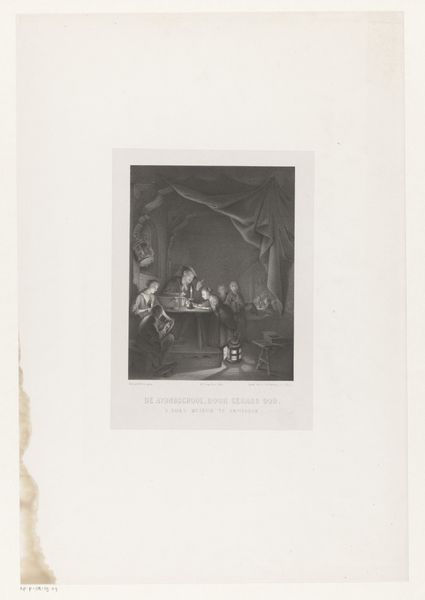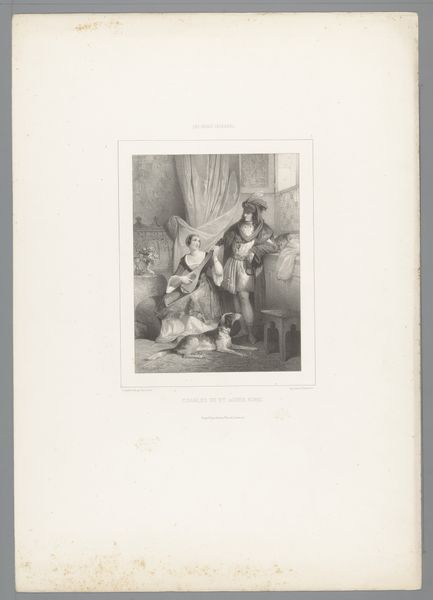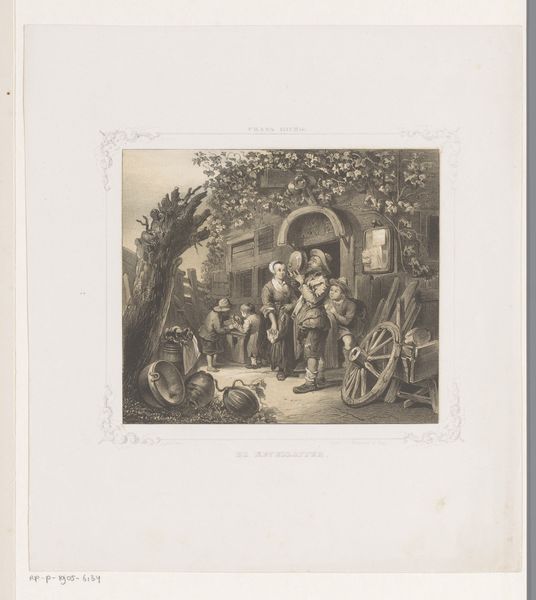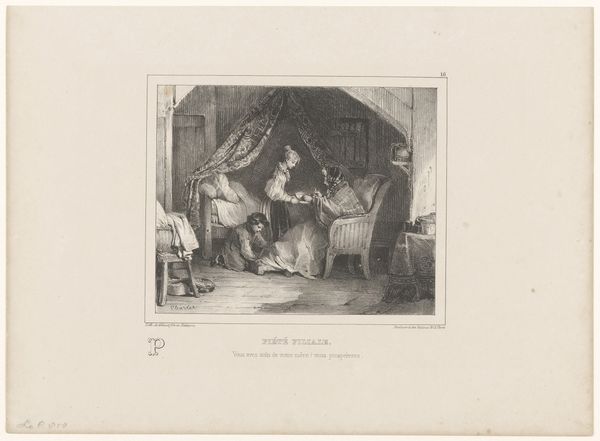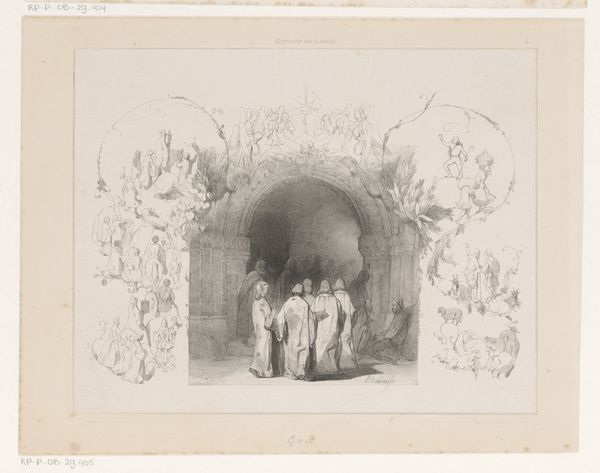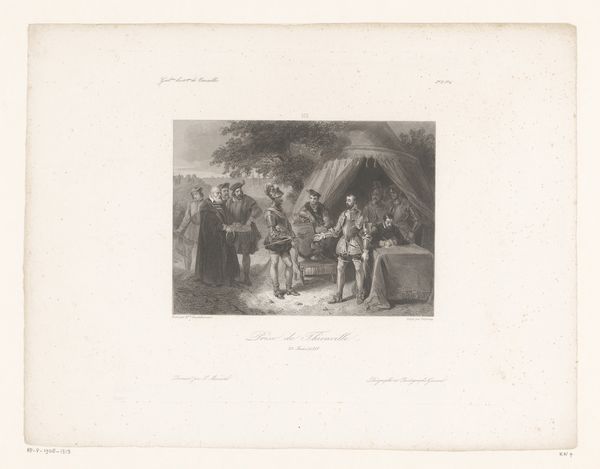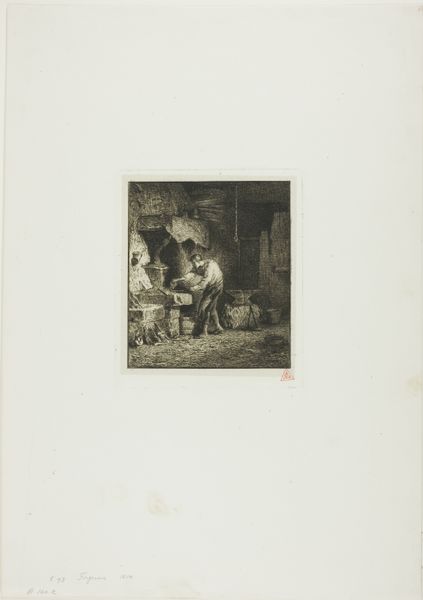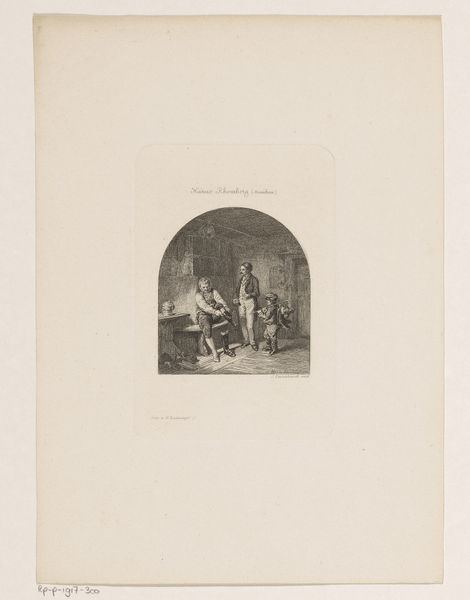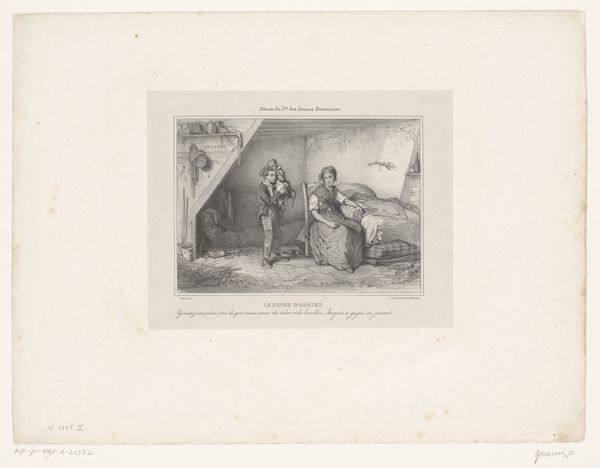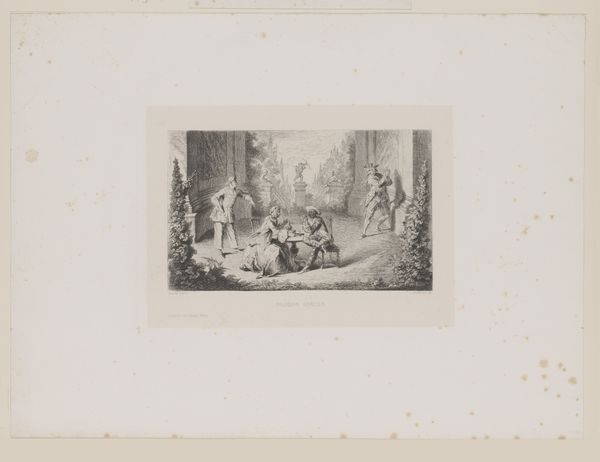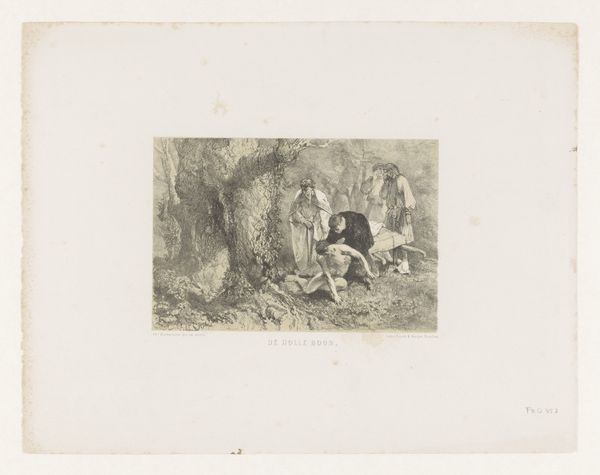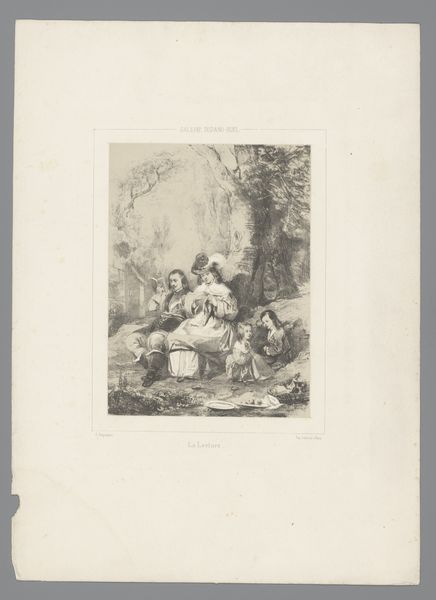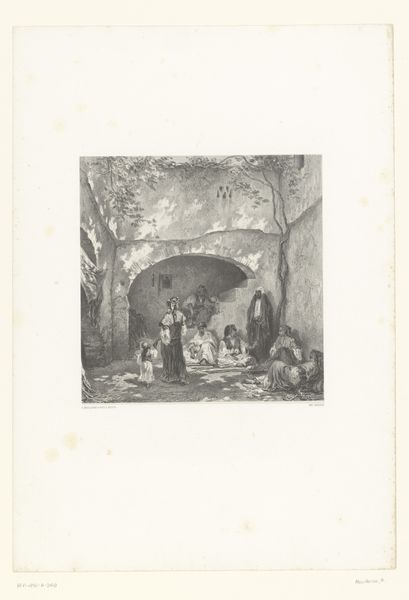
print, etching
#
medieval
#
narrative-art
# print
#
etching
#
etching
#
figuration
#
history-painting
#
monochrome
Dimensions: height 275 mm, width 360 mm
Copyright: Rijks Museum: Open Domain
Curator: Let's consider this etching, "Ziekbed van Charles IX van Frankrijk," from 1843. This reproductive print provides an intriguing lens to examine how history and artistry are constructed. What's your initial take? Editor: It definitely has a somber tone. It feels very theatrical with the drawn curtains. Being an etching, it must have taken so much labour... how can we relate this print to the social context it was created in? Curator: Exactly. Think about the materiality of printmaking in the 19th century. It allowed for the democratization of imagery, disseminating narratives far and wide. This print becomes a commodity, reflecting not only historical events but also the public’s appetite for such depictions. What does this suggest to you about labor? Editor: Hmmm… that producing multiples allows more people to interact with art, but in doing so does it devalue it? Curator: It raises crucial questions about value and authenticity. Is the emotional intensity less convincing because it is endlessly repeatable? Further, what's the significance of rendering this dramatic scene in monochrome rather than vibrant colour, when the original subject was royalty? Editor: That's so interesting. I guess the artist aimed to create something for broad consumption, emphasizing historical drama through reproducible means. Also, maybe color wasn't even accessible at that time? Curator: Perhaps! Etching, as a method, is a labour-intensive means of communicating drama and a clear point of view on the historical importance of King Charles IX's death. These prints democratised consumption of the visual art while propagating social and cultural values to those with restricted access to them previously. This all leads to my question for you: where else do you see the evidence of that distribution today? Editor: I had never thought of this etching in terms of access before! Considering printmaking and reproduction gives me a whole new understanding. Curator: Indeed. It’s about interrogating the means of production and the art object's journey from the artist's hand to widespread circulation. That wider societal and historical awareness completes the art encounter!
Comments
No comments
Be the first to comment and join the conversation on the ultimate creative platform.
